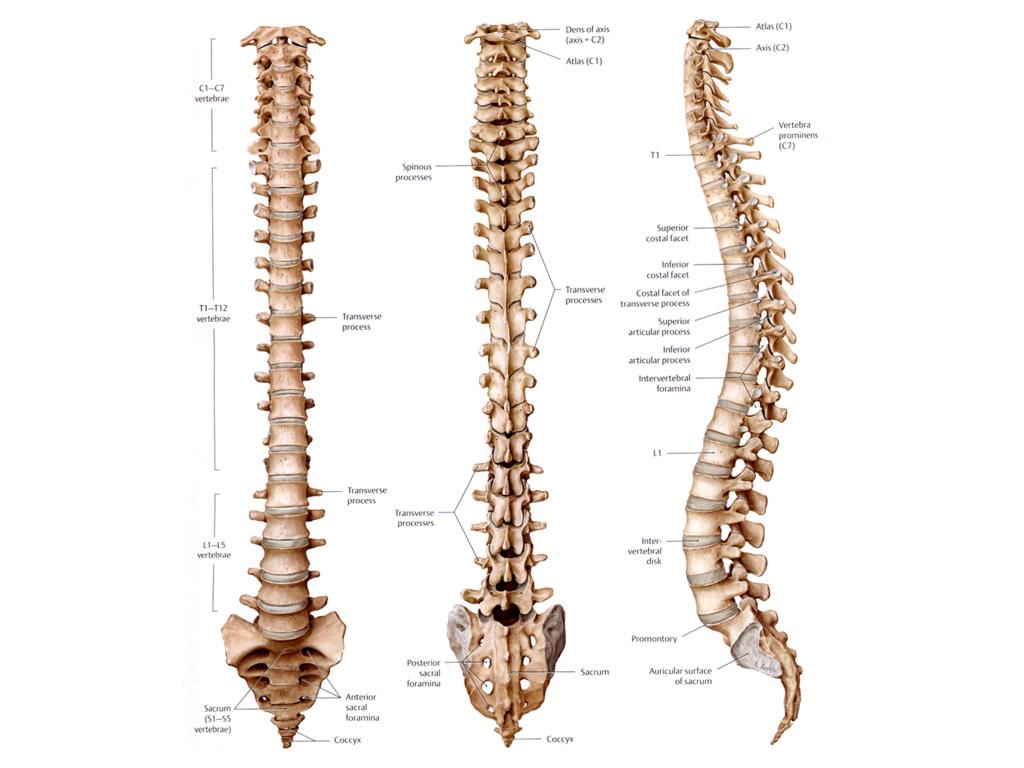

Together, these enclose the vertebral foramen, which contains the spinal cord. The vertebral arch is posterior, meaning it faces the back of a person. There are ligaments extending the length of the column at the front and the back, and in between the vertebrae joining the spinous processes, the transverse processes and the vertebral laminae.Ī typical vertebra consists of two parts: the vertebral body and the vertebral arch. One study of 908 human adults found 43 individuals with 23 pre-sacral vertebrae (4.7%), 826 individuals with 24 pre-sacral vertebrae (91%), and 39 with 25 pre-sacral vertebrae (4.3%). The number of those in the cervical region, however, is only rarely changed, while that in the coccygeal region varies most. There are 7 cervical vertebrae, 12 thoracic vertebrae and 5 lumbar vertebrae. The articulating vertebrae are named according to their region of the spine. The upper 24 pre-sacral vertebrae are articulating and separated from each other by intervertebral discs, and the lower nine are fused in adults, five in the sacrum and four in the coccyx, or tailbone. In a human vertebral column, there are normally 33 vertebrae. The number of vertebrae in a region can vary but overall the number remains the same.

The shape of the vertebral body does, however, vary somewhat between different groups. The general structure of human vertebrae is fairly typical of that found in mammals, reptiles, and birds. Many different diseases in humans can affect the spine, with spina bifida and scoliosis being recognisable examples. The human vertebral column is one of the most-studied examples. There are about 50,000 species of animals that have a vertebral column. The vertebral column houses the spinal canal, a cavity that encloses and protects the spinal cord. Individual vertebrae are named according to their region and position, and can be used as anatomical landmarks in order to guide procedures such as lumbar punctures.
HUMAN SPINE SERIES
The vertebral column is the defining characteristic of a vertebrate in which the notochord (a flexible rod of uniform composition) found in all chordates has been replaced by a segmented series of bone: vertebrae separated by intervertebral discs. The vertebral column, also known as the backbone or spine, is part of the axial skeleton.


 0 kommentar(er)
0 kommentar(er)
